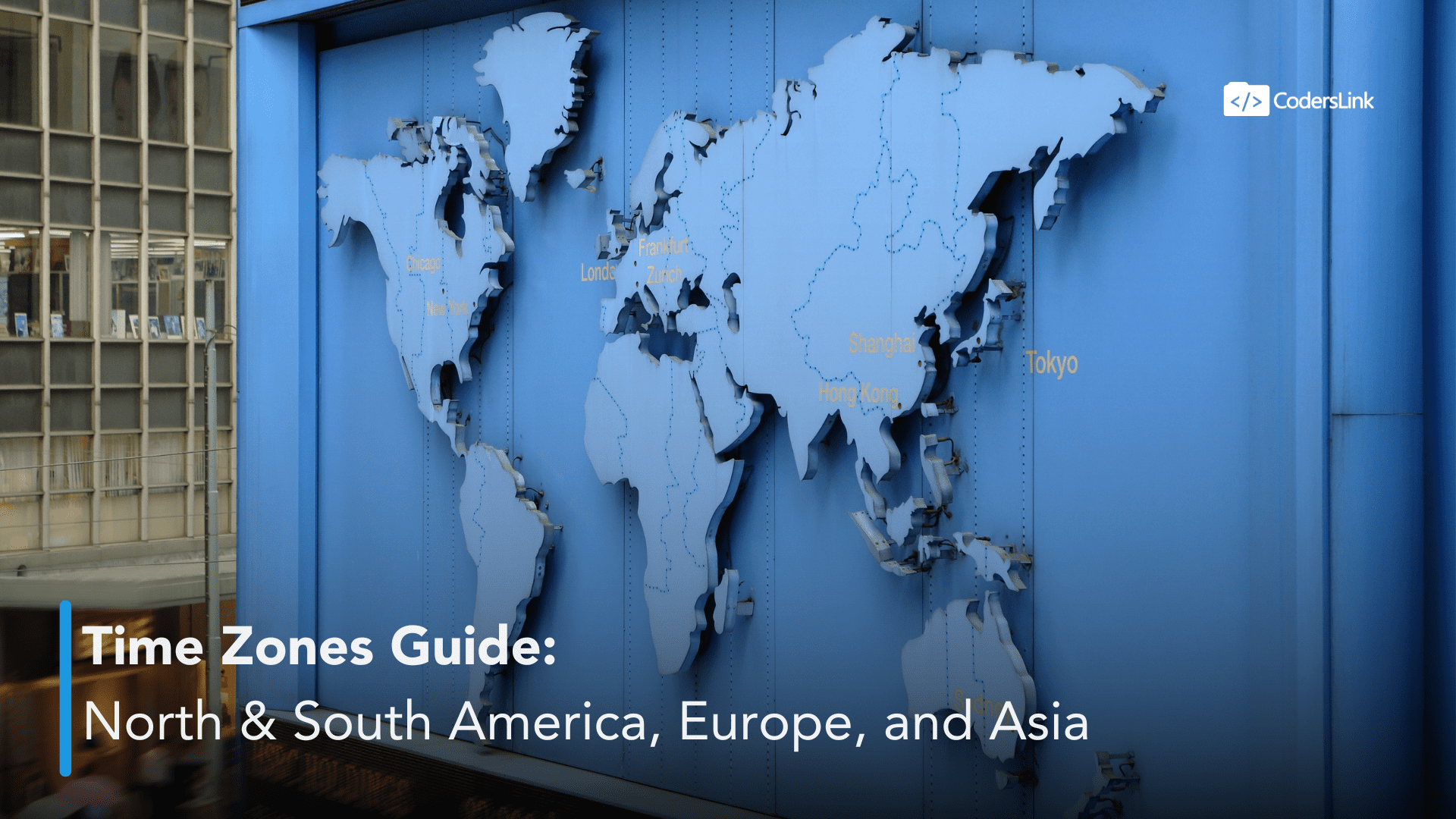
Time zones can be complex, especially for businesses with international operations. This guide aims to simplify the concept by providing detailed insights into time zones across different regions, focusing on the Americas, Europe, and Asia.
Time Zones in North and South America
North America Time Zones
North America spans seven time zones, from UTC-10 to UTC-4:
1. Hawaii-Aleutian Time Zone (HAST): UTC-10
2. Alaska Time Zone (AKST): UTC-9
3. Pacific Time Zone (PST): UTC-8
4. Mountain Time Zone (MST): UTC-7
5. Central Time Zone (CST): UTC-6
6. Eastern Time Zone (EST): UTC-5
7. Atlantic Time Zone (AST): UTC-4
Daylight Saving Time (DST) Practices in North America:
• United States: DST starts on the second Sunday in March and ends on the first Sunday in November. Clocks are moved forward one hour in spring (e.g., EST becomes EDT).
• Canada: Follows similar DST practices as the US, with exceptions in some provinces and regions.
• Mexico: Most regions observe DST from the first Sunday in April to the last Sunday in October, aligning closely with the US. However, states on the border with the US follow the US schedule.
South America Time Zones
South America primarily operates within four main time zones:
1. UTC-3: Argentina, Uruguay, and parts of Brazil.
2. UTC-4: Bolivia, Venezuela, and western parts of Brazil.
3. UTC-5: Colombia, Peru, and Ecuador.
4. UTC-6: Western part of Panama.
Daylight Saving Time (DST) Practices in South America:
• Brazil: Used to observe DST from October to February, but it has been canceled since 2019.
• Chile: Observes DST from the first Saturday in September to the first Saturday in April.
• Argentina, Peru, Colombia, and Ecuador: Generally do not observe DST.
Comparing US and Mexico Time Zones
United States Time Zones
The United States operates in the following time zones:
1. Pacific Time Zone (PST): UTC-8
2. Mountain Time Zone (MST): UTC-7
3. Central Time Zone (CST): UTC-6
4. Eastern Time Zone (EST): UTC-5
Mexico Time Zones
Mexico has four primary time zones, which align closely with US time zones:
1. Pacific Time Zone (PT): UTC-8 (Baja California)
2. Mountain Time Zone (MT): UTC-7 (Chihuahua, Sonora)
3. Central Time Zone (CT): UTC-6 (Mexico City, Guadalajara, Monterrey)
4. Eastern Time Zone (ET): UTC-5 (Quintana Roo)
Advantages of Time Zone Overlaps
1. Enhanced Collaboration: The alignment of time zones between the US and Mexico facilitates real-time collaboration, reducing delays in communication and decision-making.
2. Extended Business Hours: Overlapping work hours ensure that teams can extend their operational hours, providing better customer service and support.
3. Cost Efficiency: Nearshoring to Mexico can be more cost-effective compared to offshoring to Europe or Asia due to reduced travel expenses and similar working hours.
Time Zones in Europe
Europe is divided into three main time zones:
1. Western European Time (WET): UTC+0
2. Central European Time (CET): UTC+1
3. Eastern European Time (EET): UTC+2
Daylight Saving Time (DST) Practices in Europe:
• Europe: DST begins on the last Sunday in March and ends on the last Sunday in October. Clocks are set forward one hour in spring (e.g., CET becomes CEST).
• United Kingdom: Observes DST, moving from GMT (UTC+0) to BST (UTC+1) during the DST period.
Asian Time Zones
Asia covers a vast geographical area with numerous time zones, including:
1. UTC+2: Israel
2. UTC+3: Saudi Arabia, Russia
3. UTC+5: Pakistan
4. UTC+7: Thailand, Vietnam
5. UTC+8: China, Singapore
6. UTC+9: Japan, Korea
Daylight Saving Time (DST) Practices in Asia:
• Asia: Generally, most countries in Asia do not observe DST. Notable exceptions include Israel, which observes DST from the last Friday in March to the last Sunday in October.
Key Takeaways
1. Coordination: Effective communication and scheduling across different time zones are essential for global businesses.
2. Technology: Utilize tools like world clocks and scheduling apps to manage time zone differences efficiently.
3. Cultural Sensitivity: Be aware of local customs and working hours, especially during daylight saving time changes.


